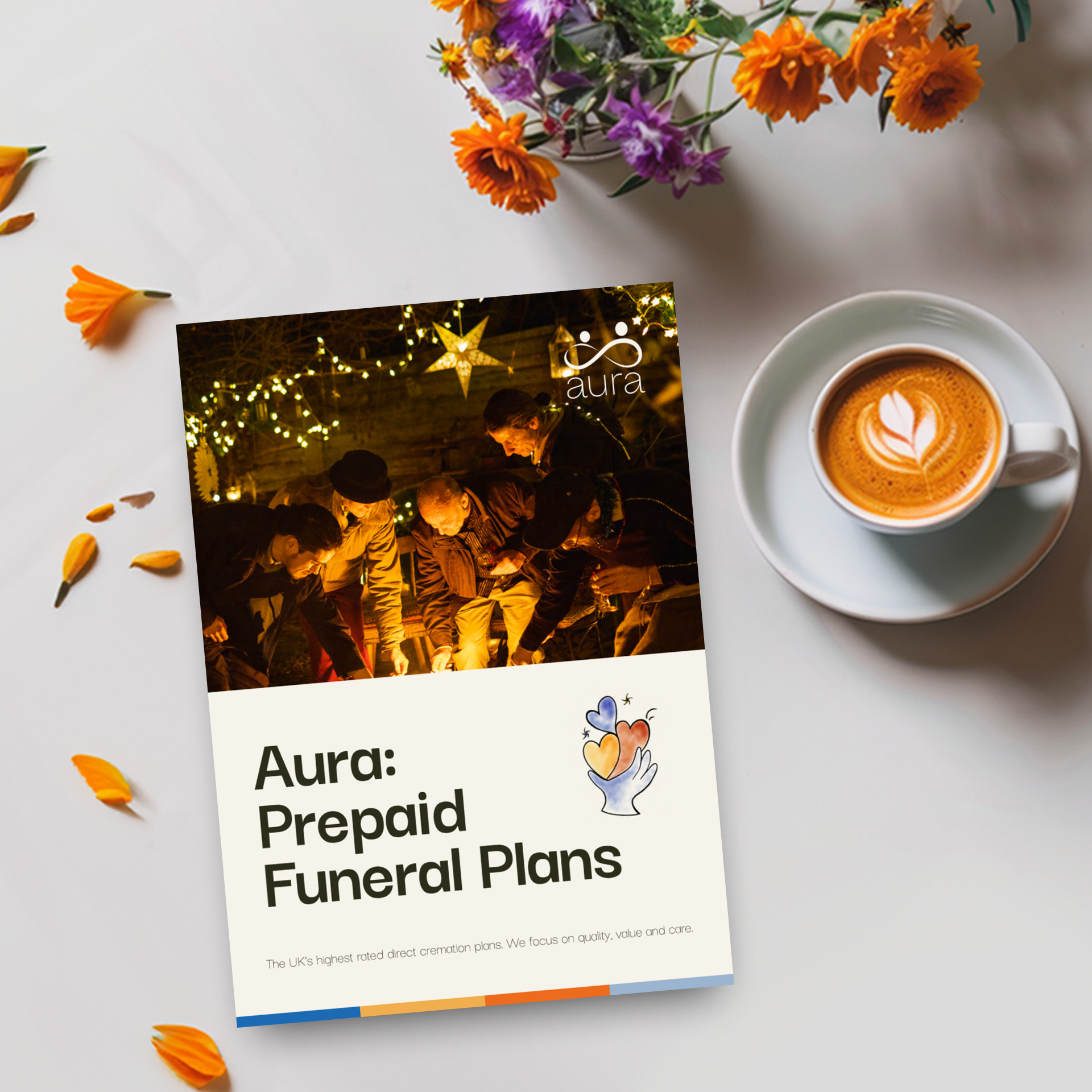
Two Together: Save £100!
Save £100 when you purchase two funeral plans together. Call us for more details.

Two Together: Save £100!
Save £100 when you purchase two funeral plans together. Call us for more details.

Thinking about setting up a trust can feel overwhelming, especially if you’re dealing with loss or planning for a future that feels uncertain. If you’re here, you might be making difficult decisions about a loved one’s estate or trying to ensure your own wishes are carried out in the best way possible. These are big steps, and it’s okay to take them one at a time.
A trust can offer peace of mind, helping to protect assets, support family members, and make sure everything is handled the way you or your loved one intended. More than just a legal document, a trust is a way to provide security, clarity, and care, even when you’re no longer here to do so yourself.
This guide will walk you through the process in a clear, straightforward way, without the confusing legal jargon. Whether you’re planning ahead or navigating these decisions after a loss, you’re not alone. Let’s take it step by step.

A trust is a legal arrangement that allows a person (the grantor) to transfer assets to a trustee, who manages them on behalf of one or more beneficiaries. Trusts are commonly used in estate planning to protect wealth, control how assets are distributed, and minimise tax liabilities, though there are many different types of trusts, each with their own specific purposes.
An asset is defined as anything of financial value that a person, business, or organisation owns, including money, property, investments, and valuable possessions.
The grantor, sometimes called the ‘settlor’ or ‘trustor’, is the person who creates the trust and decides how it should operate. They transfer their assets into the trust and set the terms for how those assets should be managed and distributed. The grantor can be a person, a couple, or even an organisation.
In a revocable trust, the grantor can make changes or dissolve the trust during their lifetime. With irrevocable trusts, the grantor gives up control over the assets once the trust is established. We’ll go more into detail about revocable and irrevocable trusts later.
A grantor might set up a trust in order to:
The trustee is the person (or entity, such as a bank or law firm) responsible for managing the trust according to the instructions laid out by the grantor. The trustee has a legal and ethical duty to act in the best interests of the beneficiaries and manage assets responsibly.
A grantor can appoint themselves as a trustee if they want to maintain control over their assets while they are alive. If the grantor does not act as trustee, they will need to select a trusted person or a professional trustee, such as a solicitor or financial institution.
The trustee’s responsibilities may include:
While a trustee manages assets within a trust, some people also appoint a Power of Attorney (PoA) to handle financial or medical decisions on their behalf if they lose capacity. A PoA works alongside a trust to ensure that decisions about finances, healthcare, and daily affairs are handled smoothly.
The beneficiary is the person, group, or organisation that receives benefits from the trust. A trust can have one or multiple beneficiaries, and what they are entitled to depends on the terms set by the grantor.
Examples of beneficiaries include:
A trust helps make sure loved ones are taken care of just as the grantor planned, whether that means providing financial stability, managing inheritance wisely, or supporting a good cause.
Trusts can generally be divided into two main categories. The first classification is based on timing—whether the trust is created during the grantor’s lifetime (living trust) or takes effect after their death (testamentary trust). The second distinction is based on flexibility, identifying whether the trust can be altered (revocable trust) or remains fixed once established (irrevocable trust). Every trust falls into both categories, meaning it will be either a living or testamentary trust, as well as revocable or irrevocable. For instance, an asset protection trust is both a living trust and an irrevocable trust because:
Trusts are generally classified based on when they are created and take effect. The two main types are living trusts and testamentary trusts.
Living trust (Inter vivos trust)
A living trust is created while the grantor is still alive and takes effect immediately. The grantor can transfer assets into the trust and decide how they should be managed and distributed, either during their lifetime or after their death.
Key features:
Example: A person sets up a revocable living trust to manage their assets while they are alive, ensuring they are distributed smoothly to their children after their passing.
Testamentary trust
A testamentary trust is created through a will and only comes into effect after the grantor’s death. Unlike a living trust, it does not avoid probate, since it must go through the legal process of executing the will.
Key Features:
Example: A parent includes a testamentary trust in their will, stating that their child will receive their inheritance in instalments rather than a lump sum.
Trusts are also classified based on whether they can be changed after they are created. The two main types are revocable trusts and irrevocable trusts, each offering different levels of flexibility and protection.
Revocable trust
A revocable trust, also known as a living trust, allows the grantor to modify, amend, or revoke the trust during their lifetime. The grantor retains control over the assets placed in the trust and can make changes as their circumstances evolve.
Key features:
Example: A person sets up a revocable trust to manage their assets, ensuring they pass to their children without probate. If they later decide to add a new beneficiary, they can amend the trust.
Irrevocable trust
An irrevocable trust cannot be changed or revoked once it is created, except under special legal circumstances. Once assets are transferred into the trust, the grantor gives up ownership and control, meaning those assets are no longer considered part of their estate.
Key Features:
Example: A person sets up an irrevocable trust to pass down wealth to their grandchildren while reducing estate taxes. Once the assets are placed in the trust, they no longer belong to the grantor and cannot be reclaimed.
There are many specific types of trusts that fall under the broader classifications mentioned above. However, these trusts are not entirely separate from the primary categories; rather, they serve as subcategories within them.
Both testamentary trusts and living trusts are sometimes considered distinct trust types on their own, without further subcategorisation. Every trust falls into either the revocable or irrevocable category, and here are some of the most well-known ones:
Family trust – Designed to manage and protect family assets across generations. It helps control how wealth is distributed and can provide tax advantages.
Discretionary trust – Gives the trustee full control over how and when to distribute funds to beneficiaries. Often used to protect assets from creditors or divorce.
Special needs trust – Provides financial support for a disabled beneficiary without affecting their eligibility for government benefits.
Charitable trust – Allows assets to be donated to charity while potentially providing tax benefits to the grantor. Includes charitable remainder trusts (CRTs) and charitable lead trusts (CLTs).
Education trust – Specifically designed to fund a beneficiary’s education, covering tuition fees and related expenses.
Spendthrift trust – Prevents beneficiaries from accessing funds in a lump sum, instead distributing money in controlled amounts to prevent reckless spending.
Asset protection trust – Shields assets from creditors, lawsuits, and financial claims, commonly used in professions with high legal risks.
Generation-skipping trust – Passes assets directly to grandchildren or later generations, bypassing the grantor’s children to reduce estate taxes.
Life insurance trust – Holds life insurance proceeds outside the taxable estate, ensuring a tax-free inheritance for beneficiaries.
Setting up a trust provides significant advantages, particularly for those looking to protect their money, manage inheritance, and reduce tax burdens. Below are some of the benefits of using a trust in estate and end-of life planning:
1. Asset protection
A trust can shield assets from creditors, lawsuits, and financial mismanagement, ensuring that wealth is preserved for intended beneficiaries. When assets are placed in a trust—especially an irrevocable trust—they are no longer considered part of the grantor’s personal estate, making them less vulnerable to financial claims.
For example, if a beneficiary goes through a divorce or faces business-related legal action, the assets in a properly structured trust are often protected from being claimed by external parties.
2. Tax efficiency
One of the biggest advantages of a trust is its ability to reduce inheritance tax and capital gains tax when passing on wealth. Certain types of trusts, such as discretionary trusts or bypass trusts, can be used to transfer assets in a way that minimises tax liabilities.
For families with large estates, trusts are a vital tool to maximise asset retention across generations while avoiding excessive tax pressures.
3. Inheritance control
Though writing a will is important, it is different from a trust. A will simply distributes assets upon death, while a trust provides ongoing control over how and when beneficiaries receive their inheritance.
For example, if a parent wants to support their child’s future while encouraging smart financial decisions, a trust can be structured to release funds gradually or with the guidance of a trustee.
4. Privacy
Unlike a will, which becomes public record during probate, a trust remains completely confidential. This means:
Probate (the legal process of distributing the estate of someone who has died) can be lengthy, expensive, and potentially stressful for grieving families. A trust allows beneficiaries to inherit assets smoothly and quietly, avoiding court proceedings during such delicate times.
5. Flexibility
A trust is a highly customisable estate planning tool that can be tailored to fit individual financial, personal, and family needs.
While a will only takes effect after death, a revocable living trust can be adjusted throughout the grantor’s lifetime as circumstances change. If new beneficiaries are born, assets increase, or financial goals shift, the terms of the trust can be updated accordingly.
Beyond using a trust to set aside funds for a funeral, some people prefer a more direct approach, choosing a prepaid funeral plan to make sure everything is arranged in advance.
Aura offers affordable, highly-rated prepaid direct cremation plans that allow you to plan ahead, locking in today’s prices and removing potential uncertainty for your loved ones. Unlike relying on a trust, which may require legal processing before funds are released, having a prepaid plan in place means that funeral arrangements are handled without delays or complications.
While traditional funerals can be expensive and complex, Aura’s direct cremation plans provide a simple, dignified service without the added stress of organising a more elaborate service. With a prepaid plan, everything is taken care of, from collection and cremation to the return of ashes so that your loved ones can focus on remembering you in their own way.
Aura is committed to keeping your money safe with a five star rating by Fairer Finance and protection by the Financial Services Compensation Scheme (FSCS), and we are trusted by families across the UK, as evidenced by our excellent 4.9/5 stars on Trustpilot.
Our funeral plans offer both security and peace of mind. When you purchase a plan, the funds needed to cover all costs are placed into our independently managed trust, ensuring they remain safe and protected until they are needed.

If you want to know more about how your funeral plan is cared for, our downloadable guide provides the details you need to feel confident. Discover the steps Aura takes to protect your funds and the regulations in place to keep your money safe.
Download our guide by clicking the link below and gain peace of mind for the future.
Making the decision to set up a trust is a big step toward securing your legacy and protecting the people who matter to you most. The process might seem a little complicated at first, but it doesn’t have to be daunting. By breaking it down into manageable steps, you can set up a trust that reflects your wishes and ensures everything is handled smoothly when the time comes.
The cost of setting up and maintaining a trust varies depending on its complexity. Legal and administrative costs include solicitor fees, which can range significantly based on the level of detail required. If a professional trustee is appointed, they may charge a fixed annual fee or take a percentage of the trust’s assets. Ongoing maintenance costs can also apply, such as annual trust management fees for professional trustees. Additionally, certain trusts may be subject to taxation, including income tax, capital gains tax, or inheritance tax, depending on how the trust is structured and managed.
The cost of setting up a trust varies depending on the complexity of the trust and legal fees. More basic trusts may generally cost less than more complex arrangements, such as irrevocable trusts.
While it is possible to create a trust using online templates or DIY legal services, most choose to work with a solicitor or estate planning expert. This is because a poorly drafted trust can lead to legal complications, tax issues, or unintended consequences for beneficiaries.
A trust can hold various types of assets, including:
Most people choose trustees who they deem to be responsible, trustworthy, and capable of managing finances in accordance with the trust’s terms. Many choose a family member, friend, or a professional trustee such as a solicitor, accountant, or financial institution. If the trust is more complex, appointing a professional trustee can ensure compliance with legal and tax obligations.
If you set up a revocable trust, you can modify or revoke it at any time during your lifetime. However, if you create an irrevocable trust, changes typically require the consent of beneficiaries or court approval, making it much more difficult to alter.
If the trust is revocable, it usually becomes irrevocable upon the grantor’s death, meaning no further changes can be made. The trustee will then manage and distribute the trust’s assets according to the instructions set out in the trust deed. If the trust was already irrevocable, it will continue to operate as planned.
Yes, a charitable trust allows you to support a cause while benefiting from potential tax advantages. Depending on how it is structured, a charitable trust can provide income to beneficiaries for a set period before transferring remaining assets to a charity, or it can immediately direct assets to a charitable organisation.
While both a trust and a will are estate planning tools, they serve different purposes:
Setting up a trust can be a thoughtful way to protect your loved ones, ensure your wishes are carried out, and provide long-term financial security. But estate planning isn’t just about managing wealth, it’s also about preparing for life’s final chapter in a way that eases pressures on those you leave behind.
By purchasing a prepaid funeral plan, you are taking another important step in planning ahead. With Aura’s direct cremation plans, you can make your funeral arrangements in advance, removing uncertainty and potential financial stress for your family.
Whether you’re looking to plan ahead for yourself or arrange a funeral for a loved one, Aura provides empathetic support and expert guidance every step of the way from our dedicated team of funeral arrangers, the Aura Angels. Taking this step now ensures that when the time comes, everything is already in place—giving you and your family the ultimate gift of peace of mind.

Our brochure includes all the details you need surrounding our prepaid direct cremation funeral plans.
Get your free brochure sent by email or First Class post by clicking on the link below.